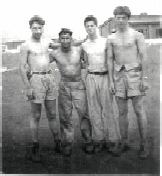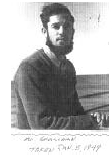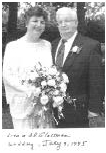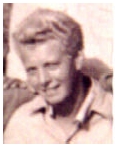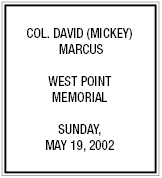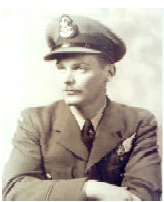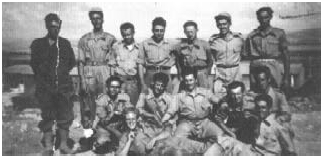
FAREWELL AND HAIL
AT THE HEBREW
UNIVERSITY JOIN THE
HAGANAH:
David Macarov
Recalls the inside story
At the end of World War II the Hebrew Uni versity in Jerusalem (in the British Mandated Territory of Palestine) was accredited for stud ies by American veterans, under the GI Bill of Rights. This meant paid tuition and $25 a month, on which one could live at that time (although with difficulty). A few authentic stu dents, including some from rabbinical seminar ies; some youth movement members evading the British need for immigration certificates; and some adventurers with Zionist inclinations took advantage of the opportunity, including my wife Frieda and myself, and by 1947 there were about fifty such students in attendance. During this same period an organization called Land and Labor was established in the States, mainly to recruit crews for the aliyah-bet ships. The head of the American part of the aliyah-bet opera tion was Zev (Danny) Schind, from Ayelet HaSchahar, and a major figure in this effort was the late Akiva Skidell, later of Kfar Blum.
As it became obvious that a eal war was in the offing, the Jewish Agency asked Abe Herman, then head of the English-Speaking Section of the of Youth and Hechalutz Department in Jerusalem, to draw up a plan to recruit volun teers who would join the yishuv in its fight for independence. I worked for Abe while attend ing the Hebrew University. He, being an edu cator with Habonim background, submitted a detailed plan called Machal (Mitnavdim m’Chutz L’Aretz) that including several months of Hebrew instruction after arrival in (then) Palestine; familiarization trips; and studies in Jewish and Zionist history, followed, after six months, by induction into the Haganah for ba sic training.
When, after Partition Day in November, 1947, war became a reality, Yaakov Dostroevsky (later Dori), Chief of Staff, discarded the educational
continued on Page 8
PRESIDENT’S MESSAGE
The time has come to pass the baton to our president elect, Eli Bergman, in accordance with AVI’s succession plan. We completed a challenging year as we focused our efforts on shoring up our treasury, developing the AVI archives as part of our legacy initiative, upgrading our data base containing members’ records (personal and service related), enhancing our Newsletter for the internet, reaching out to the community through our Speakers’ Bureau and carrying on our functions in the face of the loss of many esteemed friends. (z’l).
My heartfelt gratitude goes to all the members in the AVI leadership team with whom I was privileged to serve; David Kaplan, VP; David Gerard, Treasurer; Lola Sprinzeles, Secretary; Sam Klausner, Newsletter and internet; Ralph Lowenstein, Archivist; Jerry Rosenberg who covered Canada and David Baum and Eddy Kaplansky for their valuable help from Israel. My thanks also to the regional leadership; Al Glassman ( z’l ), Paul Kaye, Eli Bergman, Syd Abrams, Bailey Nieder, Ben Hagai Steuerman, Len Shaffron, and Bill Gelberg. Others deserving recognition for their contribution in the various functional areas include Sam Alexander, Marv Libow, Adrian Phillips and Naomi Kantey.
And so, with change come new opportunities. Eli will select his board of directors and intro- duce his program for 2002 containing changes in focus, surely within the confines of the spirit of fraternity and remembrance that is AVI’s ‘raison d’etre’. I wish Eli success on his watch and calm seas at the helm.
And to everyone….good health and peace in the year 2002.
Si Spiegelman
January 18, 2002
PROGRAM:
1. The AVI Legacy Project will continue to be our No. 1 program goal. Under Ralph Lowenstein’s direction at the University of Florida, Gainesville, it will include the continued expansion of two tracks:
a. An authoritative historical archive of Canadian/U.S. participation in the Israel Independence War, which will be available in the library at Gainesville, and worldwide on the internet. This resource is designed primarily for use by scholars, journalists and others doing historical research or seeking information on the episode. We have been experiencing in- creasing information requests which results principally from the web site that Sam Klausner is developing in cooperation with Ralph.
b. A collection of visual material that can be displayed at our own site in Gainesville, and in exhibit formats shared on a loan basis with museum sites throughout the country that display Jewish historic material — such as the ALIYA BET/EXODUS show assembled by the Jewish Historical Museum in Baltimore, and currently in storage. This museum format would utilize the memorabilia, including the diaries; letters; photos; etc. which have accumulated in response to Ralph’s periodic reminders.2. A new dimension of the Legacy Project will be an at- tempt to address a question that is being raised with increasing frequency: What happens after AVI?
continued on Page 2
